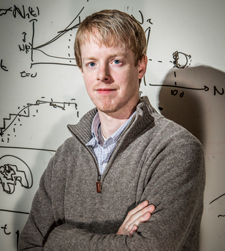Article courtesy of Biomarker Magazine from the University of Illinois Institute for Genomic Biology.
“Well, in our country,” said Alice, still panting a little, “you’d generally get to
somewhere else — if you run very fast for a long time, as we’ve been doing.”
“A slow sort of country!” said the Queen. “Now, here, you see, it takes all the running you can do, to keep in the same place. If you want to get somewhere else, you must run at least twice as fast as that!”
-Lewis Carroll, Through the Looking Glass
Inspired by the Red Queen in Lewis Carroll’s Through the Looking Glass, collaborators from the University of Illinois and National University of Singapore improved a 35-year-old ecology model to better understand how species evolve over decades to millions of years, as reported in Ecology Letters.
The new model, called a mean field model for competition, incorporates the “Red Queen
Effect,” an evolutionary hypothesis introduced by Lee Van Valen in the 1970s that suggests
organisms must constantly increase their fitness in order to compete with other ever-evolving organisms in an ever-changing environment. The mean field model assumes that new species have competitive advantages that allow them to multiply, but over time new species with even better competitive advantages will evolve and outcompete current species, like a conveyor belt constantly moving backwards.
The model gets its name from field theory, which describes how fields, or a value in space and time, interact with matter. A field is like a mark on a map indicating wind speeds at various locations to measure the wind’s velocity. In this ecological context, the “fields” approximate distributions of species abundances. Ecologists can use models to predict what happens next and diagnose sick ecosystems, said Assistant Professor of Plant Biology James O’Dwyer, who co-authored the study.
CREATING A MODEL ECOLOGY MODEL
The mean field model has improved a fundamental ecology model, called neutral
biodiversity theory, which was introduced by Stephen Hubbell in the 1970s. Neutral theory
does not account for competition between different species, thus considering all species to be selectively equal.
“The neutral model relies on random chance,” said O’Dwyer, who is a member of the Biocomplexity theme. “It’s like a series of coin flips and a species has to hit heads every time to become very abundant. That doesn’t happen very often.”
Neutral theory can predict static distributions and abundances of species reasonably well, but it breaks down when applied to changes in communities and species over time. For instance, the neutral model estimates that certain species of rainforest trees are older than Earth.
“At one end of the spectrum, we have this neutral model with very few parameters and very simple mechanisms and dynamics, but at the other end, we have models where we try to parameterize every detail,” O’Dwyer said. “What’s been hardest is to take one or
two steps down this spectrum from the neutral model without being sucked down to this very complicated end of the spectrum.”
By creating a more realistic model that incorporates species differences, O’Dwyer and co-author Ryan Chisholm, an assistant professor at National University of Singapore, have taken an important step down that spectrum. “Our model is not the ecological equivalent of Einstein’s General Theory of Relativity, which was a conceptual leap for physics,” O’Dwyer said. “It is an incremental step at this point. But we will need those conceptual leaps that incorporate the best parts of different models to really understand complex ecological systems better.”
The Templeton World Charity Foundation
supported O’Dwyer’s work.
You can view the complete Biomarker magazine here
